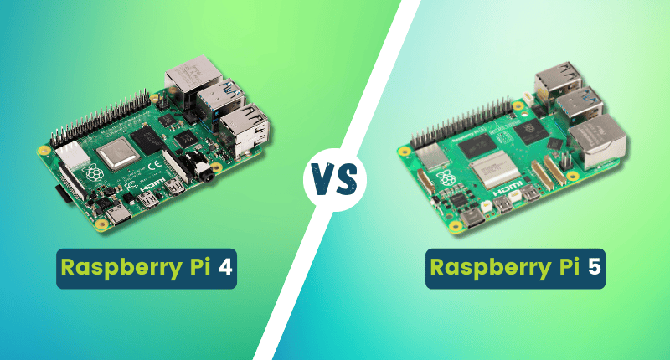Itsfoss
2w
149

Image Credit: Itsfoss
Raspberry Pi 4 vs Pi 5: What's the Difference?
- The Raspberry Pi 5 is a significant upgrade over the Raspberry Pi 4 with faster hardware like a better CPU, GPU, and enhanced I/O.
- The Raspberry Pi 5 has a PCIe Gen 2 slot, two 4-lane MIPI interfaces, an RTC, and a built-in power button.
- The Raspberry Pi 4 requires a 5V, 3A power supply while the Raspberry Pi 5 demands a higher 5V, 5A power supply due to its increased power consumption.
- The Raspberry Pi 5 runs noticeably hotter, making adequate cooling a necessity which can be achieved by using active cooling solutions such as fans or more advanced heat sinks.
- In terms of benchmarks, the Raspberry Pi 5 significantly outperforms the Pi 4 in CPU, GPU, and memory performance tests.
- The Raspberry Pi 4 and Pi 5 have different price points, with the Raspberry Pi 4 typically priced around $35-$55 and the Raspberry Pi 5 ranging from $60-$80.
- Despite the benchmarks showing the Pi 5 is much faster, the experience is similar to Pi 4 in many ways with smoother, lag-free YouTube playback and faster boot times on the Pi 5.
- The Raspberry Pi 5 is a big step up from the Pi 4 but deciding on which one to pick ultimately depends on individual needs.
- The Pi 4 is a solid choice for everyday computing tasks and beginners while the Pi 5 is recommended for projects requiring high performance and memory-intensive applications.
- Both Raspberry Pi 4 and Pi 5 provide good value for their price points, catering to a variety of projects and needs.
Read Full Article
8 Likes
For uninterrupted reading, download the app